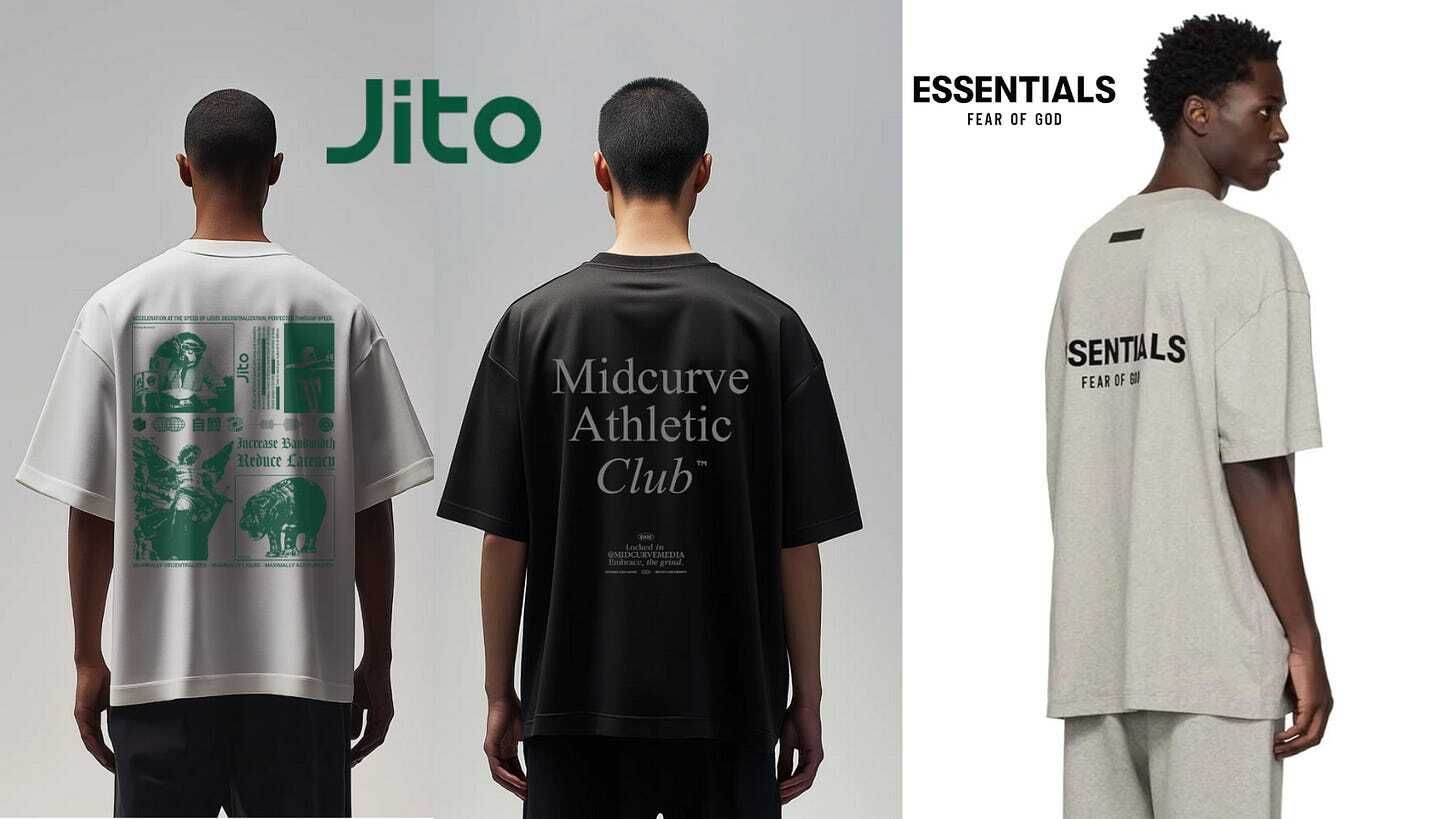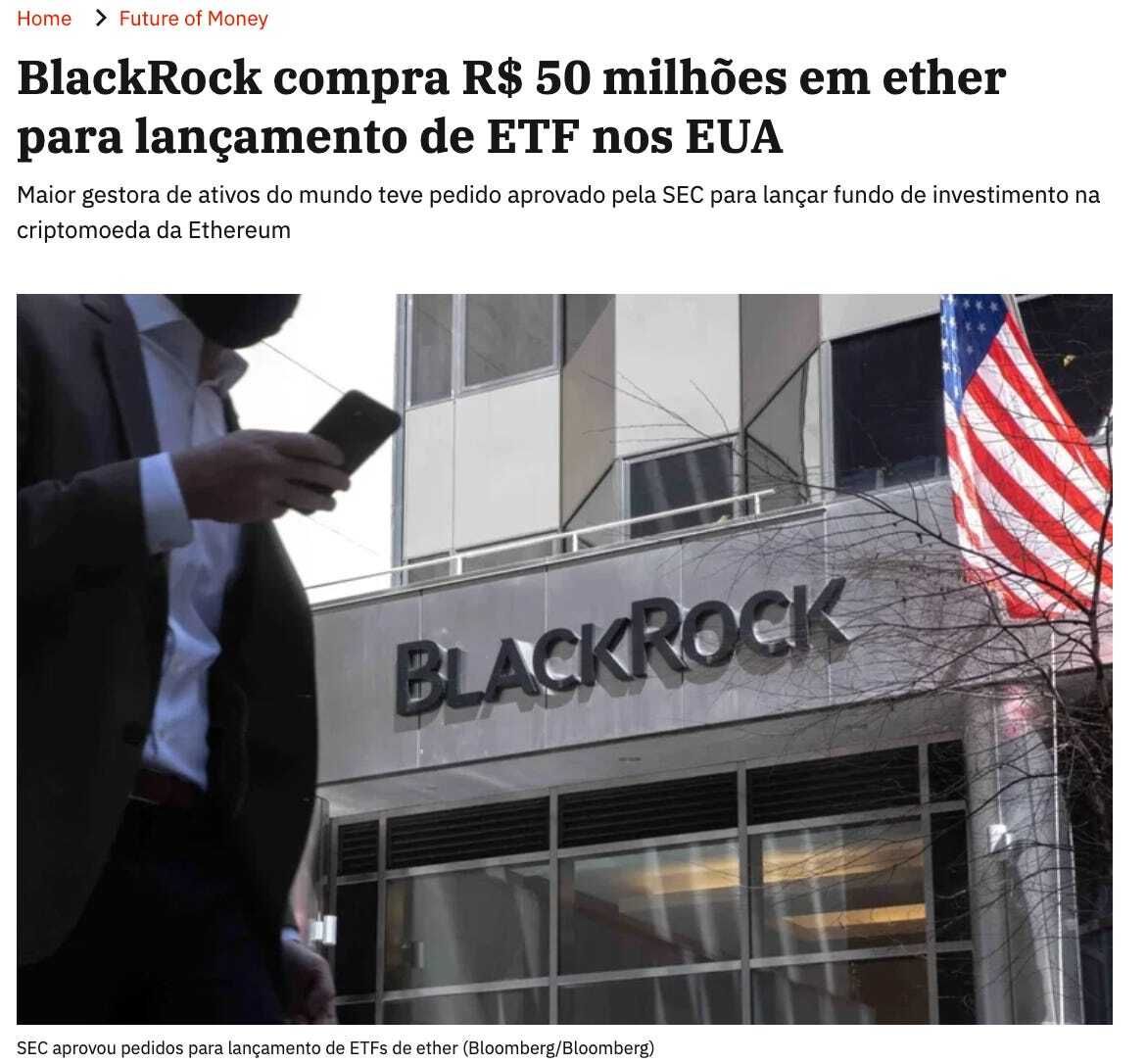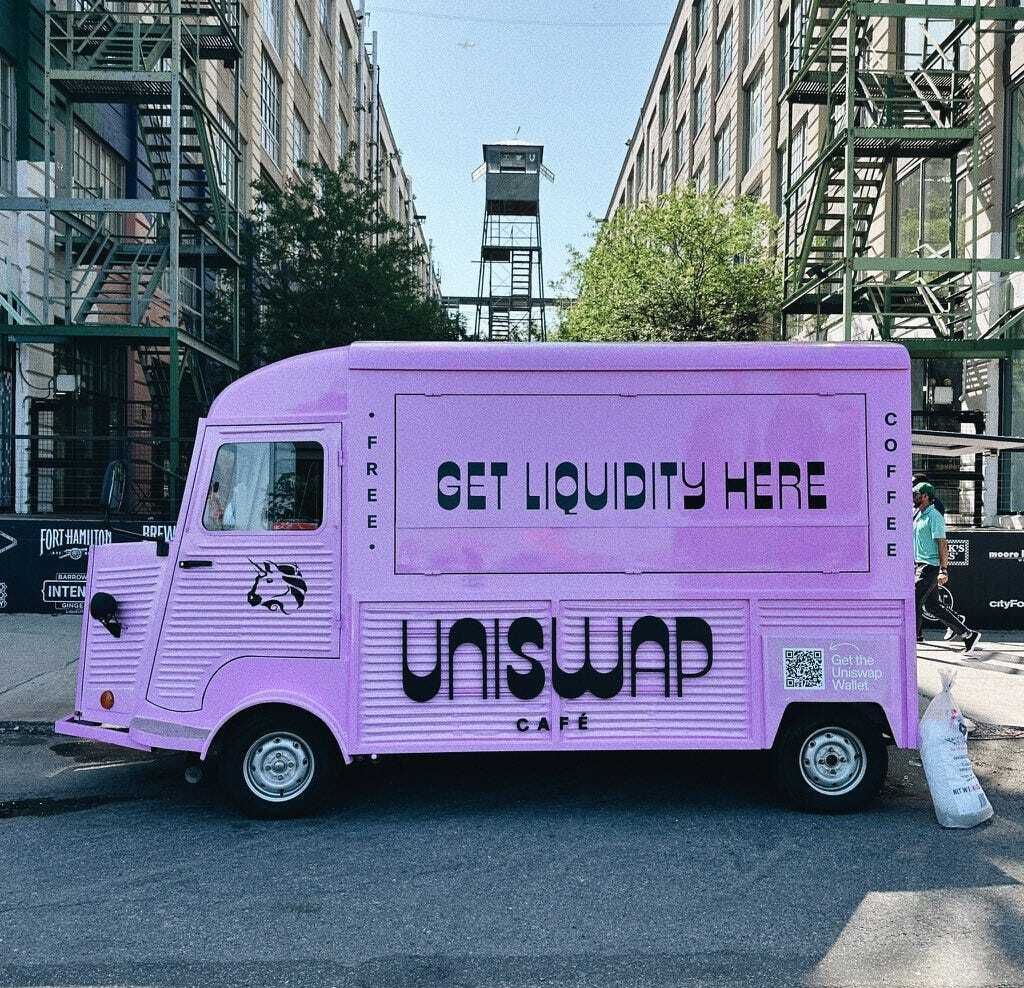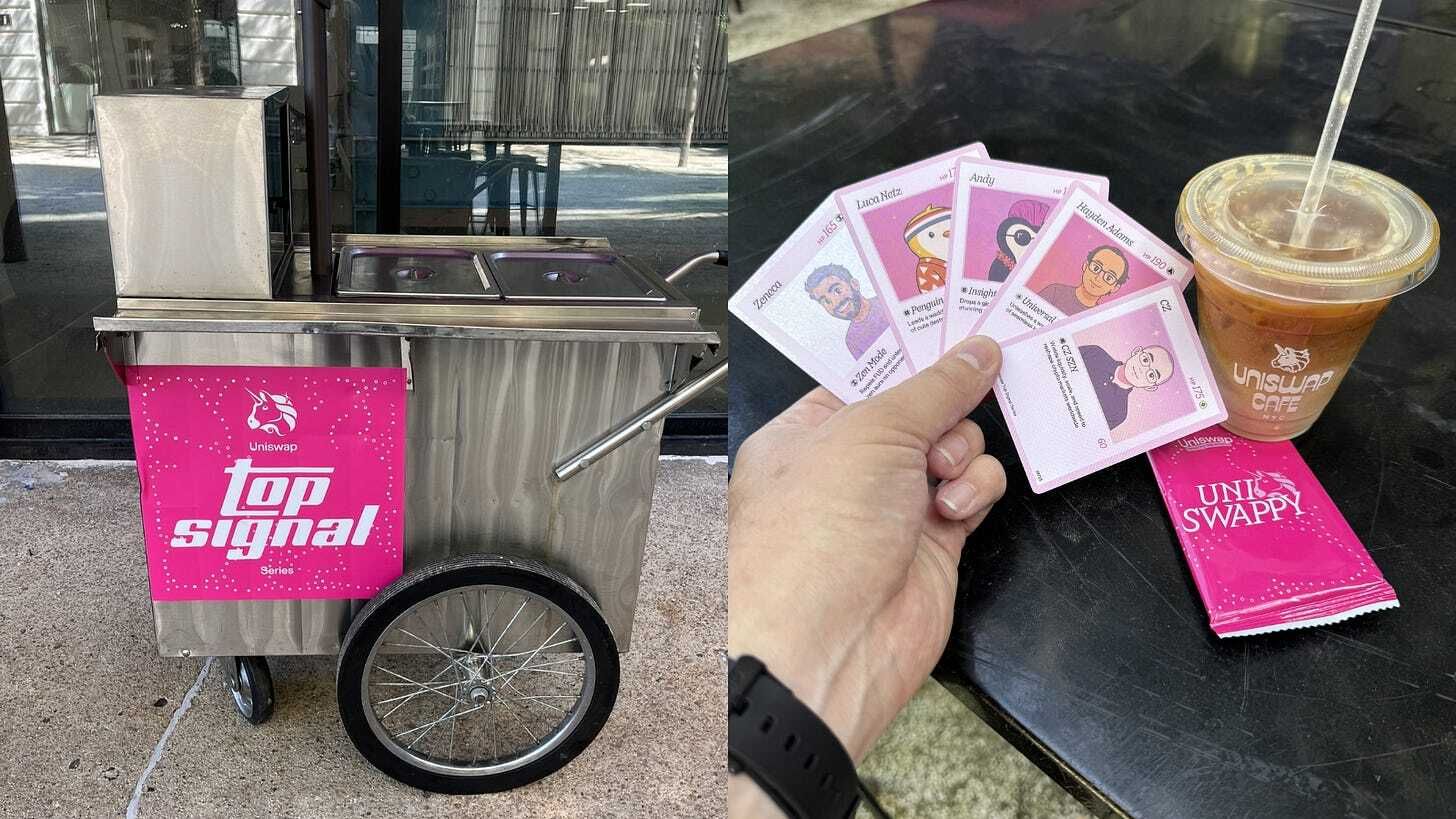- Modular Newsletter
- Posts
- Do Technologies Need a Strong Brand?
Do Technologies Need a Strong Brand?
Whether they do or not is up to you to decide. But some companies are already moving in that direction.
What Changed in the Market?
For a while, crypto companies, whether blockchains or Dapps, gained strong traction simply by delivering truly innovative technology, solving real problems, or offering an interface that appealed to the average user.
We live in a market that never stops, running 24/7 with rapid evolution. We are in a moment of heightened attention, as countries are starting to adopt Bitcoin as a reserve asset, institutions are increasing their exposure to Ethereum and Solana, and the United States, one of the world’s largest economies, is now seriously discussing regulation for the sector.
On top of that, we are talking about blockchain, a technology rooted in transparency. That is why most projects are open source.
For those unfamiliar, open source means the software’s source code is publicly available. Anyone can use it, adapt it, modify it, and redistribute it.
This accelerates innovation, but it also makes copying easier. And that is where things start to change.
When Everything Starts to Look the Same 😴

Image generated by ChatGPT
Over time, many Dapps stopped being as innovative. Some appear only on a new chain. Others bring minor, sometimes irrelevant, changes. Some redesign their interfaces to look cleaner or more stylish.
As a result, pioneers lose ground. Some projects die. Others blend into the crowd, just one more protocol among many, all basically doing the same thing with minimal differences.
Seeing this trend, I noticed something else. Even market leaders are now focusing on strengthening their brands.
Why?
Because technology alone is no longer enough. The average user, the so-called “ordinary Joe,” does not understand and often does not care to understand the underlying tech or how it actually works. They do not care about that. They want to connect. They want to feel like part of something.
That is where branding comes in.
Technology and Marketing: The Basics That Never Change
At the end of the day, technology companies are being forced back to the basics: marketing and brand positioning, fundamentals that work just as well in Web2 as in Web3.
To better understand this shift, it helps to revisit some classics, such as Philip Kotler, often called the father of marketing, and Al Ries and Jack Trout, pioneers of brand positioning. They all argued that positioning a brand must be intentional. Building a strong brand goes far beyond having a nice logo or a good product. It is about occupying space in people’s minds, becoming part of their imagination.
Some companies did this so well that their names became synonymous with the product itself: Gilette (razor blade), Bombril (steel wool), Tupperware (plastic containers), Band-Aid (adhesive bandage), Q-tip (cotton swabs). Others built desire just by being who they are, reinforcing their branding through consistency, narrative, advertising, and associations with people and lifestyles.
Some brands developed such strong, concise, and strategic communication that they do not even need to display their name or sell directly in ads anymore. Instead, they insert their products subtly into stories, creating connections with daily life and embedding themselves in the consumer’s imagination.
Apple is a prime example, with emotional storytelling campaigns where products appear subtly, highlighting benefits and innovation, connecting with people on a deeper level without explicitly selling. Coca-Cola does the same by associating its brand with happiness, celebration, and family meals, maintaining a powerful presence in collective memory even when not directly advertising the drink.
Nike and Jordan: The Turning Point 🏀
Nike is one of my favorite examples. I used to resell exclusive sneakers for a while, especially Nike and its sub-brand Air Jordan.
Everyone knows Nike. Everyone wants Nike. But it is not just about product performance. Nike represents performance, victory, and overcoming challenges. And that comes from carefully crafted branding.
The turning point came with Michael Jordan. He was the first player to have his own sneaker line. More than a superstar, he was authentic, stylish, and charismatic. Nike saw the moment and doubled down. Designer Tinker Hatfield created iconic silhouettes. The brand reinvented itself, shifting from a runner’s company to a symbol of attitude.
The “Unbannable” campaign captured this perfectly. The NBA tried to ban the original Air Jordan for breaking uniform color rules. Jordan kept wearing them. Nike paid the fines and turned it into a marketing tool: “The NBA banned them, but you can wear them.”
That is it: strong narrative, sharp positioning, and a brand that sticks.
Jito 👕💚
In crypto, a great case is Jito, Solana’s largest liquid staking protocol. They were already known for a generous airdrop, an active DAO, constant improvements, and complex solutions like Tip Router, NCN, and VRTs.
But Jito realized that was not enough.
They launched a media arm, Midcurve, focused on community lifestyle. It is not just about tech, it is about the people, what they live, consume, and do.
They also released clothing. But not just merch, pieces with design, cuts, and aesthetics similar to brands like Fear of God. That creates desire. People want them not just because they look good, but because they identify with what the brand stands for.
"My number one job is being CEO of Jito Labs, my number two job is getting people building on @solana."
- @buffalu__
(@Permissionless vlog drops next week)
— Midcurve (@midcurvemedia)
10:11 PM • Oct 21, 2024

Comparison between Jito Store clothing and Fear of God
Sophon 👕 🔄
Another strong case is Sophon, a blockchain that quickly understood the power of branding.
They have invested heavily in content, lifestyle videos, storytelling, and most interestingly, brand personification. Team members appear regularly, building real connections with the audience.
They also lean into exclusivity. They auctioned a one-of-a-kind jacket for $10,000. During ETHCC 2025, they set up branded vans around the city. And to get a Sophon T-shirt, you had to trade in your own.
These actions create lasting experiences. I personally only discovered Sophon because of these activations. It worked.
The intersection of culture and tech.
1/1 AURA GENESIS jacket has arrived.
— sophon (@sophon)
7:50 PM • Jun 27, 2025
MERCH SWAP @ ETHCC
FIND THE SOPHON VAN
JULY 3RD, 3PM CEST | LOCATION DROPS TOMORROW
— sophon (@sophon)
9:06 AM • Jul 2, 2025
“Arbitrum Everywhere” 💙🧡
As an Arbitrum ambassador, I have seen firsthand how they approach branding.
Arbitrum has solid products, security, and cutting-edge tech. But now they are focused on occupying people’s minds.
The ambassador program is key. It encourages content not only in English but also in local languages, broadening reach and building diverse connections. Ambassadors strengthen both Arbitrum and their own personal brands.
They have also hosted workshops and classes with people from Google, BlackRock, Robinhood, and Entropy Advisors, showing real investment in education and community.
Another highlight was their campaign with Kaito, a Dapp analyzing Twitter engagement. They built a scoring system for people talking about Arbitrum, driving more content, research, and involvement. The result: Arbitrum became more visible, more talked about, and more remembered.
And of course, their mantra: “Arbitrum Everywhere.” Everything becomes ArbXYZ: ArbCar, ArbHouse, Arb-whatever-you-can-think-of. It spreads virally, reinforces presence, and becomes part of culture.
Uniswap and Nostalgia Done Right 🦄
To wrap up, there is Uniswap.
At Permissionless, they hit the streets with creative posters, puns about liquidity and scam tokens. They had a Uniswap-themed van serving coffee with on-brand references, all under the slogan “GET LIQUIDITY HERE.”
But the standout activation was Pokémon-style trading card packs, featuring crypto figures, inside jokes, and of course, the Uniswap logo.
It tapped into collective nostalgia. Nostalgia, when used intentionally, is a powerful tool.
So, What Now? 👀
After all this, I will ask again: do technologies need a brand?
From my perspective, yes. Branding is what makes people remember you. In an open-source sea, being remembered is nearly everything. With products and technologies growing more similar, the true differentiator is not just what you deliver, but how it is distributed and communicated. People connect with ideas that resonate with them, and that is what transforms technology into brand.
If you want to chat, find me on Twitter: @bonis_crypto
And follow @ModularCrypto, Brazil’s largest Web3 media and education hub.
Thanks for reading this far.
Disclaimer: The content discussed here is strictly informational and meant to encourage general discussion. It should not be interpreted as financial, tax, or personal advice. We strongly encourage you to do your own research and consult qualified professionals.





Reply